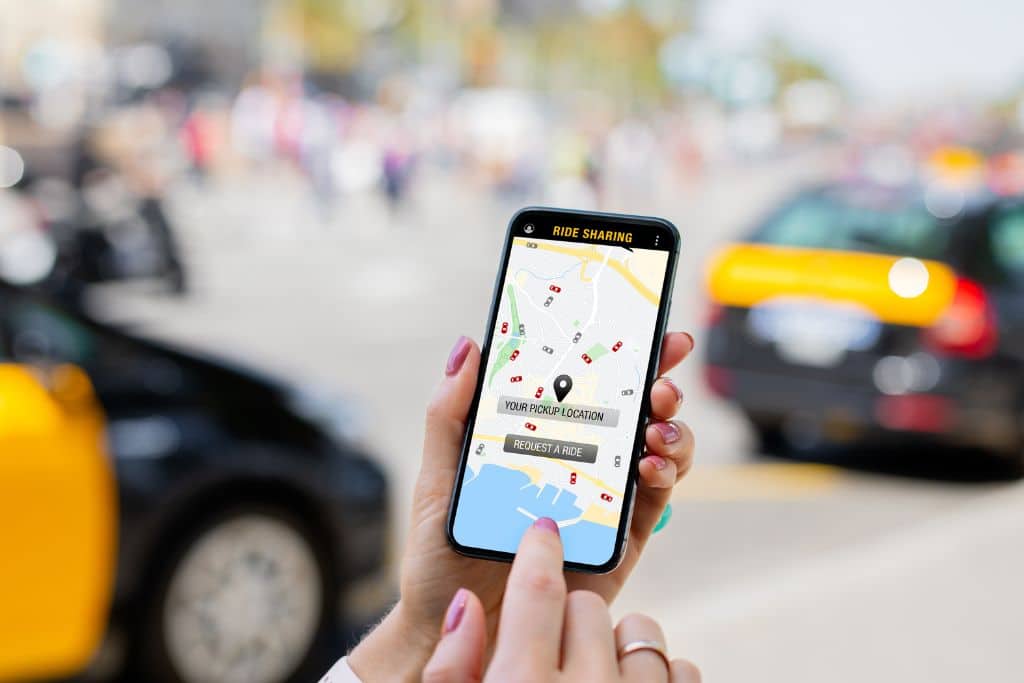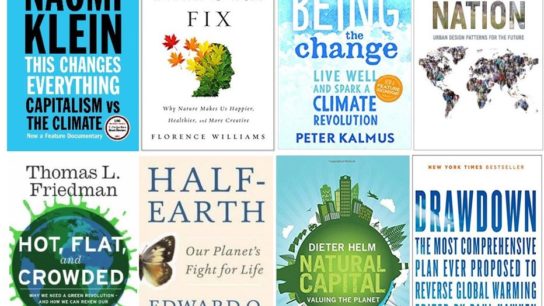Governments and local municipalities must take action to reduce carbon emissions and look beyond “reduce, reuse, and recycle” programmes. The transport sector is responsible for releasing billions of tons of greenhouse gases into the atmosphere every year, greatly contributing to global warming. For this reason, it has become imperative and as urgent as ever before to find more sustainable transport solutions to ensure a greener future.
—
Transportation is one of the biggest hurdles with regard to social and economic development. It accounts for 23% of the world’s carbon dioxide emissions, 27% of all energy use, and 64% of global oil consumption. Thus, it is vital that countries implement more sustainable structural changes to enable more positive outcomes.
Unfortunately, the US is far behind other countries when it comes to making changes. The American public transportation system needs many upgrades and other areas of the transportation sector, such as freight transportation and aviation, could benefit from similar changes.
Below are some proposed solutions for how the US can reduce emissions and invest in more sustainable transportation infrastructure to produce positive economic, social, and environmental outcomes.
8 Sustainable Transport Solutions
1. Better Infrastructure for Bicyclists
While many cities across the US have implemented bike lanes to help those who prefer to commute on two wheels instead of four, many of these bike lanes are nothing more than painted lines that do not actually do much to protect cyclists. This lack of infrastructure for bicyclists does not encourage people to ditch their cars. Bike lanes need to be broader and separated from vehicle lanes – this would not only improve the safety of cyclists but also encourage more people to opt for bike commuting.
The US is not alone in this regard. Other countries are struggling to create more bike-friendly cities, such as Hong Kong.
If cities did more to create safer bike lanes, more people would start choosing to commute that way. Citywide bike-share programmes can and should also be expanded. These types of programmes are gaining popularity nationwide but they often only exist in selective urban areas, making it difficult for everyone to access them.
Improvements for bike lane infrastructure can take time to plan and develop. In the meantime, local governments can expand their bike-share programmes to start encouraging more people to ride bikes instead of driving. From a city planning perspective, bike shares are relatively inexpensive and easy to install.
2. Encourage More Carpooling and Ride-Sharing
There are numerous environmental, social, and even financial benefits of carpooling. Carpooling helps people save money on fuel, reduces traffic congestion, and cuts down on carbon emissions. While carpooling programmes like ride-share services have gained in popularity in recent years, they tend to only do well in more populated areas.
In a city like Los Angeles, for example, people can catch a Lyft or an Uber fairly easily. In smaller cities and more rural or suburban areas, however, it can take a long time to get a ride because there are fewer ride-share drivers available.
However, if more cities started encouraging carpooling and did more to promote ride-share services, the number of people who have access to and utilise these services would inevitably increase.

3. Invest in Alternative Fuel Technology
Investing in greener transportation solutions, such as alternative fuel technology, is another great way for US cities to develop more sustainable transportation systems. Specifically, more investments in things like electric transportation and zero-emission vehicles could go a long way toward reducing carbon emissions.
Electric buses are one example of alternative fuel or rail systems that run on electricity instead of fuel. Cities can also look into using buses and other vehicles that run on natural gas, such as compressed natural gas (CNG) vehicles as these may be more accessible than electric technology in some areas.
4. Make Communities More Pedestrian-Friendly
Prioritising pedestrian-friendly infrastructure is another way to create greener cities that are better for the community and the environment. Developing cities and neighbourhoods that are more walkable and pedestrian-friendly will encourage more people to walk, which would, of course, help reduce the number of cars on the roads.
Pedestrian-friendly communities also better support public transportation by making infrastructure more accessible. Walkable communities also encourage people to be more active, which promotes healthier more holistic lifestyles.
5. Greener Supply Chain Transportation
Transportation that serves the purpose of transporting goods for the supply chain is another major issue when it comes to the burning of fossil fuels. Freight transportation, which includes trucks, planes, ships, and trains, is responsible for 8% of global greenhouse gas emissions. Without major changes, freight transportation is expected to become the highest carbon-emitting sector by 2050.
Thus, it is vital that the US do more to find ways to efficiently transport raw materials and finished products across the supply chain. Of all the ways to transport goods, rail has the lowest environmental impact. More companies relying on rail would not only reduce the impact on the environment but could also help lessen road congestion.
Next-generation freight trucks, such as electric trucks, can also help. Other options could include bio-fuel trucks, bio-gas trucks, and CNS trucks. In particular, the automotive industry must adopt a greener supply chain because of the compound impact of shipping cars with internal combustion engines to their final destinations. To mitigate this impact, freight companies can use electric trucks to handle the shorter routes at the end of longer-haul deliveries. Not only is such change essential to the environment but it will also help automotive freight keep up with the competition. According to the EPA, up to 98% of fleets are moving toward sustainable vehicles and fuels.
You might also like: 4 Unique Solutions to America’s Failing Public Transportation System
6. Decarbonise Aviation
The aviation sector is another area of transportation that could significantly benefit from going electric. While aviation currently ‘only’ accounts for 2.5% of global emissions, projected growth trends predict that the aviation sector will become a major carbon producer by 2050.
To prevent this from happening, we need more investment in electric aviation and sustainable aviation fuels (SAFs). This includes aircraft used for freight transportation, as well as aircraft used for travel.
You might also like: 4 Sustainable Aviation Fuel Companies Leading the Way to Net-Zero Flying
7. More Expansive Public Transportation
The US has a bad habit of treating public transportation like a social welfare programme, which has discouraged many people from using these systems. There has also been little investment in public transportation compared to other countries. But if Americans started treating public transport more like an essential resource, it could enable solutions to become cheaper and more effective.
This includes:
- Creating a more robust busing system to make bus transportation more accessible.
- Expanding commuter rails beyond urban areas so more people in the suburbs and even rural areas can access them.
- Expanding public transportation in small towns and rural neighbourhoods in general, so fewer people have to use their cars to commute into the city.
8. Educate Drivers on More Sustainable Travel
Educating people on how to travel more sustainably is a key part of an effective sustainable transportation strategy. While it takes time to build sustainable infrastructure, local and national governments should spend time and resources educating and encouraging the population about the environmental impacts of certain means of transport.
Educating drivers on how to reduce their carbon footprint when traveling can be extremely beneficial. Tips to offer include:
- Pack lighter and more efficiently to improve fuel economy
- Plan more fuel-efficient routes
- Utilise cruise control to conserve fuel
- Avoid idling
Encouraging more drivers to invest in greener vehicles can also help. For example, better tax benefits for those who buy electric or natural gas vehicles can encourage more people to purchase vehicles that are better for the environment. Existing tax credits were recently modified by the US government, including limitations on credits for vehicles with batteries manufactured outside of North America and income caps on who can claim the credits. However, many critics argue that these initiatives feel more like a step backward, though price caps on more expensive vehicles under last year’s landmark Inflation Reduction Act could also benefit companies moving towards electric fleets.
Final Thoughts
The effects of climate change are no longer a future problem – they are a here-and-now problem. We are already seeing the disastrous effects of rising global temperatures every day and in every corner of the world. As such, it is imperative that the US takes bigger steps to find better ways to reduce emissions, starting with investing in more sustainable transport solutions.
You might also like: Decarbonising the Transport Sector Through Efficient Public Transport Systems


















